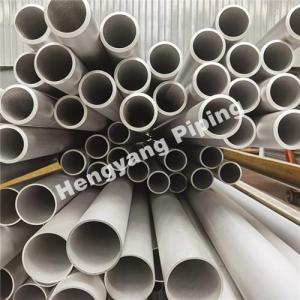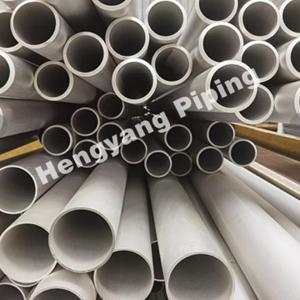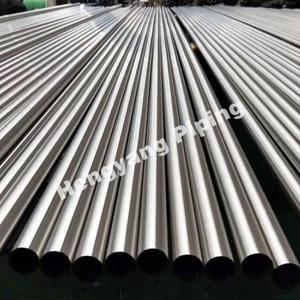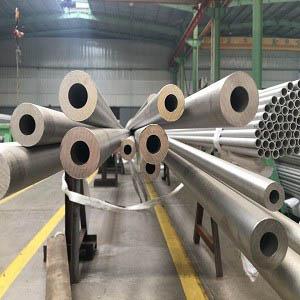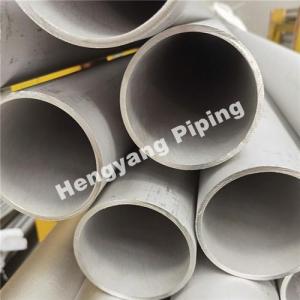Features of Austenitic Stainless Steel
Austenitic stainless steel is a type of stainless steel alloy that is highly regarded for its exceptional corrosion resistance and versatile properties. It is characterized by its austenitic crystal structure, which imparts specific features and benefits. In this article, we will delve into the features of austenitic stainless steel in detail.
1. Corrosion Resistance:
One of the primary features of austenitic stainless steel is its outstanding corrosion resistance. This is attributed to its high chromium (Cr) content, typically ranging from 18% to 28%. Chromium forms a protective passive oxide layer on the surface of the steel, which prevents the material from corroding when exposed to corrosive environments. The oxide layer acts as a barrier, blocking the access of corrosive agents to the underlying metal. Additionally, austenitic stainless steel contains nickel (Ni), which further enhances its corrosion resistance, especially against acidic solutions and chloride environments. This exceptional corrosion resistance makes austenitic stainless steel suitable for a wide range of applications, including chemical processing, marine environments, food processing, and medical equipment.
2. High Temperature Resistance:
Austenitic stainless steel exhibits good heat resistance, allowing it to maintain its strength and corrosion resistance even at elevated temperatures. The high chromium and nickel content contribute to its ability to withstand oxidation and scaling at high temperatures. Austenitic stainless steel can retain its mechanical properties, such as tensile strength and impact resistance, in applications involving exposure to heat, such as exhaust systems, heat exchangers, and high-temperature processing equipment. It also maintains its corrosion resistance, making it suitable for applications in combustion environments, gas turbines, and furnace components.
3. Ductility and Formability:
Austenitic stainless steel is known for its excellent ductility and formability. It can be easily formed, bent, and fabricated into various complex shapes without significant risk of cracking or failure. The austenitic crystal structure, characterized by a face-centered cubic (FCC) lattice, allows for extensive plastic deformation without undergoing a phase change. This property makes austenitic stainless steel well-suited for processes such as deep drawing, rolling, and bending, enabling the production of intricate components and structures. The material's formability also contributes to its easy weldability, as it can accommodate thermal expansion and contraction during the welding process without significant distortion.
4. Low Magnetic Permeability:
Austenitic stainless steel is generally non-magnetic in the annealed condition. The austenitic crystal structure lacks the magnetic properties found in other stainless steel types, such as ferritic or martensitic stainless steels. This low magnetic permeability can be advantageous in certain applications where magnetic interference needs to be minimized or when non-magnetic properties are required, such as in electrical and electronic devices, magnetic resonance imaging (MRI) equipment, and sensitive instrumentation.
5. Cryogenic Performance:
Austenitic stainless steel exhibits excellent mechanical properties and toughness even at extremely low temperatures. It maintains its ductility and impact resistance in cryogenic conditions, making it suitable for applications that require performance in cold environments. The material's ability to withstand cryogenic temperatures without brittle fracture or loss of strength is beneficial in industries such as aerospace, energy, and cryogenic storage. Components such as storage tanks, pipelines, and cryogenic valves often utilize austenitic stainless steel due to its reliable performance in sub-zero environments.
6. Hygienic and Easy to Clean:
Austenitic stainless steel is widely recognized for its hygienic properties and ease of cleaning. Its smooth surface finish and excellent corrosion resistance prevent the accumulation of bacteria, making it highly suitable for applications in the food processing, pharmaceutical, and medical industries. The material is resistant to staining, contamination, and degradation, ensuring that it remains sanitary when exposed to food products, medical fluids, or harsh cleaning agents. The ease of cleaning and maintenance contributes to the overall safety and hygiene of austenitic stainless steel equipment and structures.
7. Aesthetic Appeal:
Austenitic stainless steel pipes is aesthetically pleasing and is often chosen for its attractive appearance. It can be polished to a high shine, providing a clean, reflective surface that adds a modern and sophisticated touch to architectural designs, decorative features, and consumer products. The material's bright and lustrous finish enhances its visual appeal and contributes to its widespread use in high-end applications where aesthetics play a significant role.
8. Weldability:
Austenitic stainless steel is highly weldable, making it convenient for joining components and fabricating complex structures. It exhibits good weldability due to its low carbon content and the presence of alloying elements like chromium and nickel, which promote solidification and reduce the risk of welding defects. Austenitic stainless steel can be welded using various welding techniques, including arc welding (such as TIG or MIG welding) and resistance welding (such as spot welding). The material's ability to maintain its corrosion resistance and mechanical properties in the heat-affected zone near the weld ensures the integrity of the welded joints.
9. Excellent Fabrication and Machining Characteristics:
Austenitic stainless steel offers excellent fabrication and machining characteristics, making it a versatile material for various manufacturing processes. It can be easily cut, drilled, milled, turned, and shaped using standard machining techniques. Austenitic stainless steel's ductility, low work hardening rate, and good chip-breaking properties contribute to improved machinability and reduced tool wear during machining operations. The material's ease of fabrication and machining allows for efficient production and customization of components according to specific requirements.
Conclusion
Austenitic stainless steel exhibits a wide range of features and characteristics that make it a highly desirable material in numerous industries and applications. Its exceptional corrosion resistance, high-temperature performance, ductility, formability, low magnetic permeability, cryogenic toughness, hygienic properties, aesthetic appeal, weldability, and ease of fabrication contribute to its versatility and widespread use. Whether in chemical processing, architecture, food processing, medical equipment, or other fields, austenitic stainless steel continues to play a crucial role in meeting demanding performance requirements and ensuring long-term durability.
If you want to know more information about Austenitic stainless steel, please contact us. We will provide professional answers.

